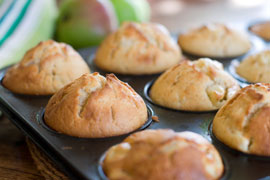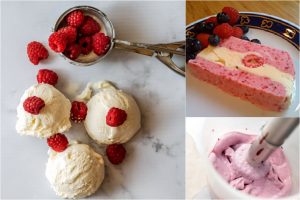Healthy Snacks without Refined Sugar

Snacks make up an important source of energy for young children—their growing bodies require a constant supply of energy for development and of course, for play and daily activities. While these snacks make up about 30% of total daily calories, it’s obviously important to provide the right types of foods to ensure a balance of nutrients.
A recent report indicates that we are feeding our children far too many calories in the form of empty, non-nutritious foods. These include baked desserts, sugar-sweetened beverages like sodas, fruit beverages, and sports drinks. Almost 40%of total calories came from poor nutrition choices in kids’ diets, aged 2 to 18 years. A full 18% of total calories come from added sugars in drinks and foods. Research indicates that the majority of sweetened beverages are consumed at home, and that plain water intake is generally quite low.
So what can parents do to change or improve the quality of their child’s diet, or better yet, make sure they avoid offering a diet high in plain sugars? Here are some suggestions that will help you make some smart choices on the types of foods you offer your children—controlling amount of sugar, and providing a source of rich nutrients.
- Offer fresh fruits and vegetables as snacks. These foods do have sugar, but also contain all important vitamins, minerals, and fibre (note: we know that children are getting about ½ the fibre that they need daily—increase fibre intake by offering fruits and vegetables as daily snacks).
- Try homemade cookies, bars and muffins. You control the sugar in this instance. Experiment with reducing the amount of sugar that a recipe calls for, unless it states that sugar is already limited.
- Offer flavored milk instead of fruit punch, sodas or drinks. Even sweetened flavored milk has 30 to 50 % less added sugar than these drinks (try mixing sweetened milk with plain milk to further decrease the sugar content.
- Limit packaged or processed sweets and dessert. The label will inform you just how much nutrient value the product contains.
- Provide water and milk as beverages of choice for children and adults, too! We often can confuse hunger for thirst. Have a jug of water with fresh slice of lemon, lime, cucumber or melon on the table with meals and snacks, make sure that everyone travelling in the car has their water bottle for thirst quenching.
Finally, we recommend starting to educate your children early. Help them make connections between the energy they need for sports and play, the minerals that their bones and muscles need, and vitamins for keeping their bodies healthy. Food guides and food labels are great tools to use to make healthy eating a family goal.















